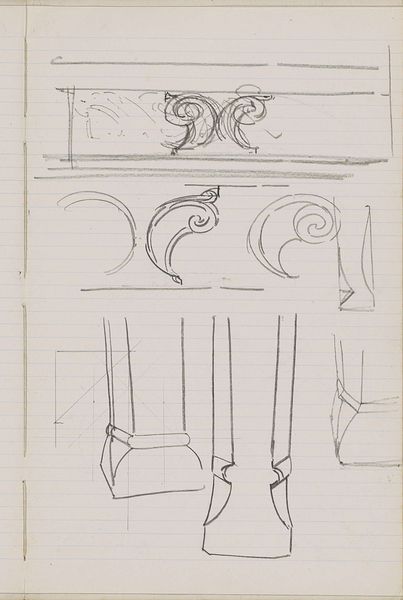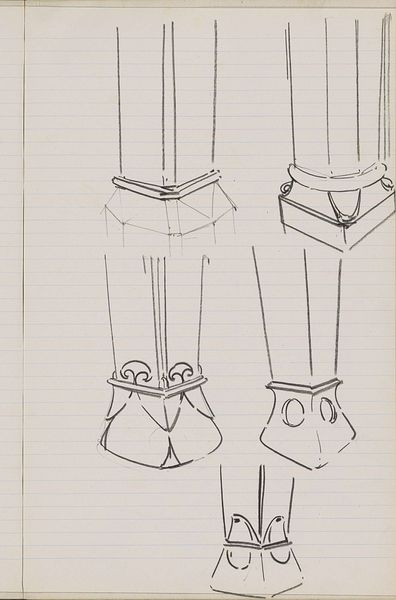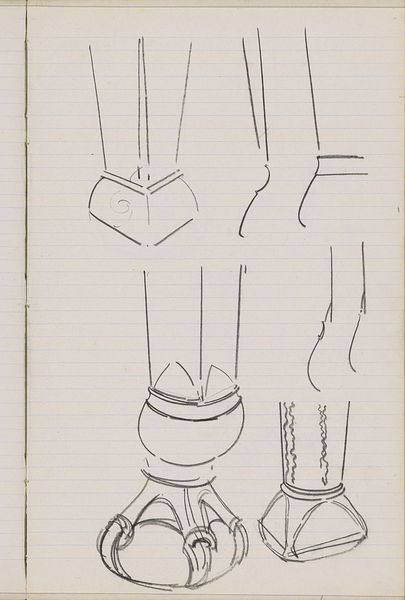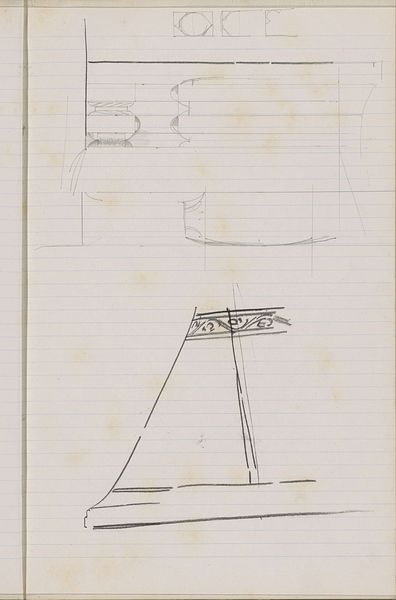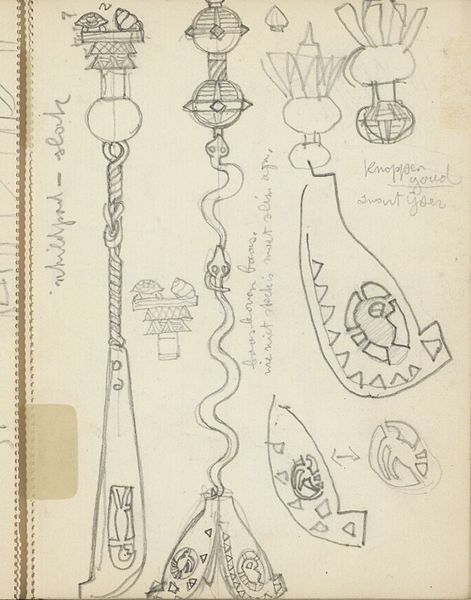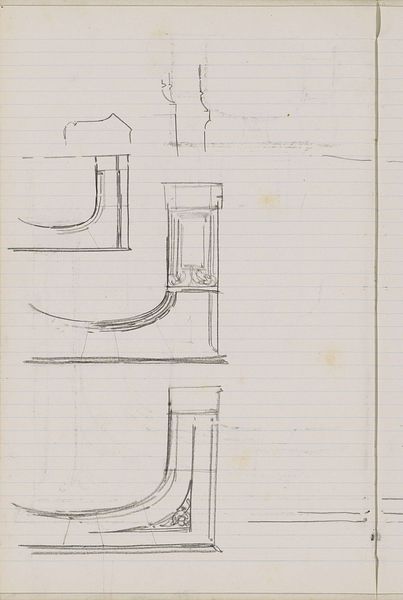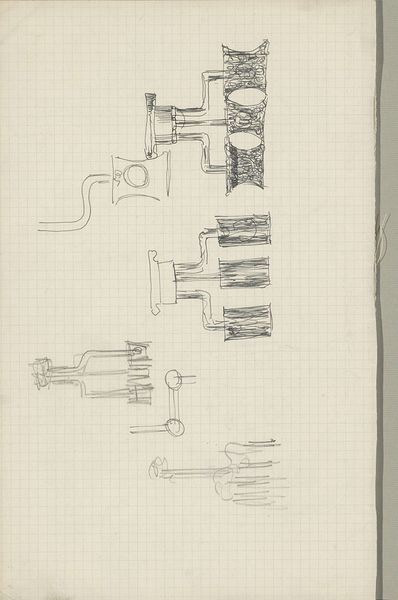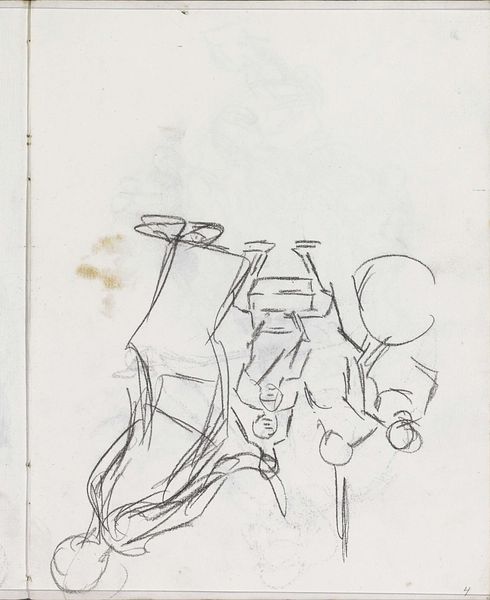
drawing, paper, pencil
#
drawing
#
art-nouveau
#
paper
#
form
#
geometric
#
pencil
#
line
Copyright: Rijks Museum: Open Domain
Editor: This is Gerrit Willem Dijsselhof's "Tafelpoten," a pencil drawing on paper from around 1901, currently held in the Rijksmuseum. The sketch-like quality gives it an unfinished, almost dreamlike appearance. What strikes you most about it? Curator: I see more than just a design for table legs. Look at the date – around 1901. Art Nouveau, right? But consider the social context. Furniture wasn’t just furniture. It spoke to class, to aspiration. Who got to have artful furniture like this, and who was making it? The labor involved, often unseen, underpinned these ‘artistic’ flourishes. Do you think Dijsselhof was engaging with those power dynamics? Editor: That's a great point! I was so focused on the aesthetic, I didn't really think about the social implications. The lines, while elegant, also feel quite rigid in places, a tension maybe reflecting that very unease. Curator: Precisely! And consider the geometric forms juxtaposed with the organic curves. This blend challenges traditional hierarchies in design, pointing towards a potential desire to democratize aesthetics. To question the established norms. Could it be that the intended functionality of a table becomes a site of silent protest? Editor: A silent protest through furniture design! I never would have considered that. It’s fascinating how something so seemingly simple can reveal so much about the time it was created. Curator: It’s about asking whose stories are embedded in these objects. The beauty isn’t just in the lines, but in the questions they raise about power and access. Editor: Thanks, that gives me a completely new way to look at design! It's like unlocking a secret language.
Comments
No comments
Be the first to comment and join the conversation on the ultimate creative platform.

